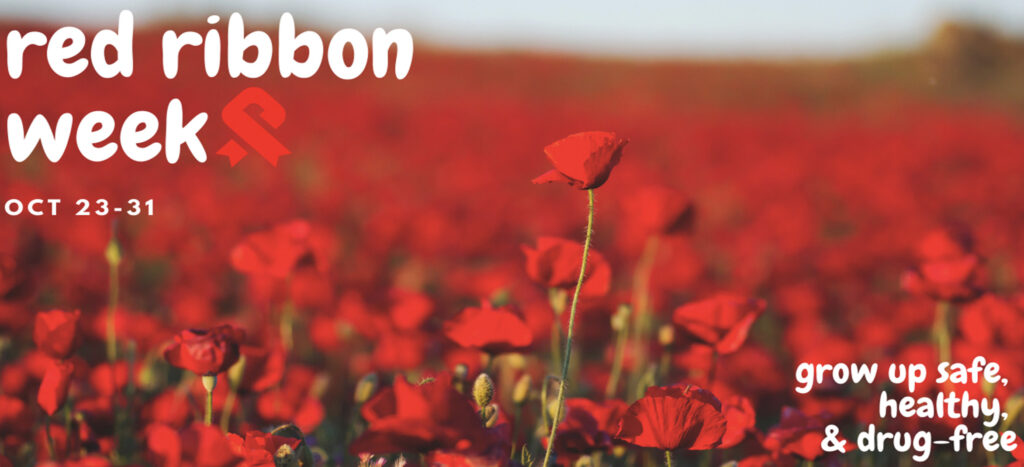Happy Red Ribbon Week!
Red Ribbon Week is a national holiday during the last week of October and serves as a reminder to talk to young people about drugs and alcohol. Because much of the information teens learn about drugs and alcohol comes from their friends, pop-culture icons, and social media, it’s often glamorized and seen as a normal part of being a teen. However, science tells us that each year a young person delays using drugs or alcohol decreases their risk of ever having a problem with them. That is because using these substances during the teen years interferes with important brain development that is occurring until a person reaches their mid-20’s. By helping your children learn more about drugs and alcohol, together we can help build a healthier, happier community.
Why Do We Make Young People Wait Until 21 to Drink Alcohol?
The age limit for alcohol is based on the fact that a young person’s brain is still undergoing important development, which continues well into adulthood. Using alcohol or drugs during this development can actually rewire the brain for addiction because it interferes with the reward center of the brain. Research shows that when teens start using at a young age, they are more likely to continue the habit into adulthood. In fact, teens who begin drinking before age 15 are six times more likely to develop a problem with alcohol later in life than those who begin drinking after age 21. [i]
Marijuana and Young People
With the recent legalization of marijuana in California, teens may be under the impression that marijuana is not harmful. If all teenagers are hearing is that marijuana is “fun and harmless,” they are missing facts that may shape their decisions. Marijuana is more potent today, and available in more ways than ever before. It is more important than ever that adults help educate young people and be a part of the conversation that helps this generation understand how today’s marijuana may affect their developing brain.

What We Know
Marijuana has evolved tremendously over the last decade with studies showing that the high inducing chemical, tetrahydrocannabinol (THC), has increased from about 3% to over 15%, while the calming and supposedly therapeutic chemical, cannabidiol (CBD), has decreased. High THC levels can lead to side effects such as anxiety, aggressive behavior and difficulty sleeping. Marijuana use carries greater, long-term risks for teens as their brain is undergoing important development until they are about 20 to 25. In fact, studies show that 17% of people under the age of 24 who use marijuana become addicted. Frequent use during this time has been shown to impair brain processing speed and memory and may permanently lower IQ by as many as eight points.[ii] As a comparison, lead paint is estimated to lower IQ by about 6 points. Unfortunately, marijuana use during adolescence is also linked to the onset of major mental illness, including psychosis, schizophrenia, depression, and anxiety.[iii]
Take the Quiz

Are you Red Ribbon Week ready? Take the quiz to see if you are ready to talk to your child about drugs and alcohol!
[i] Underage Drinking. (2020, January 03). Retrieved September 01, 2020, from https://www.cdc.gov/alcohol/fact-sheets/underage-drinking.htm
[ii] Proceedings of the National Academy of Sciences USA. (2012, August 27) Persistent cannabis users show neuropsychological decline from childhood to midlife. Retrieved from https://www.ncbi.nlm.nih.gov on Oct 9, 2017.
[iii] National Association of Drug Court Professionals (2012, December 15). Position Statement on Marijuana.
